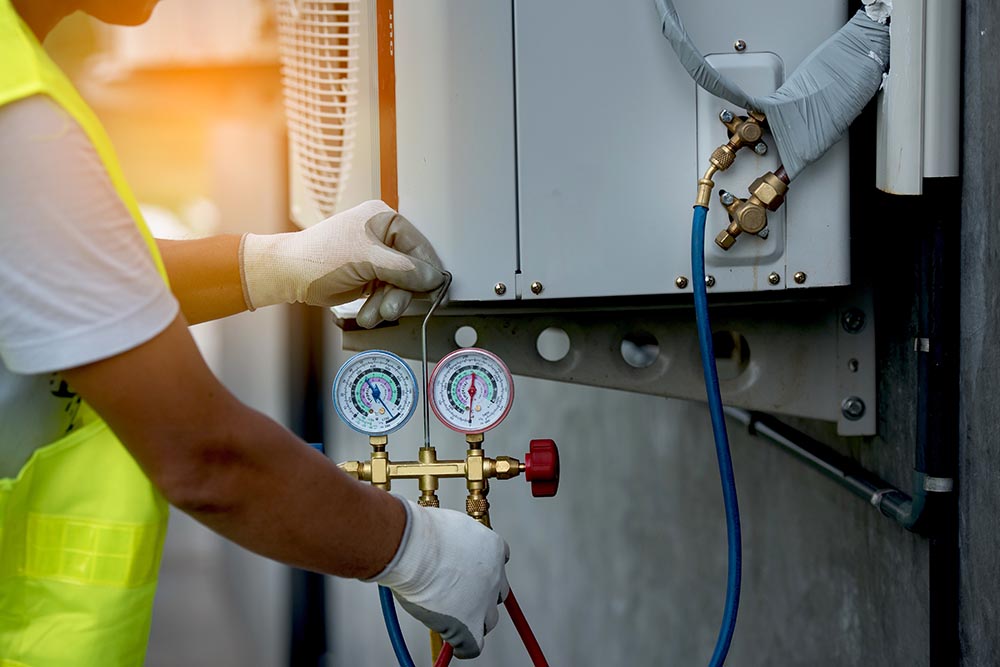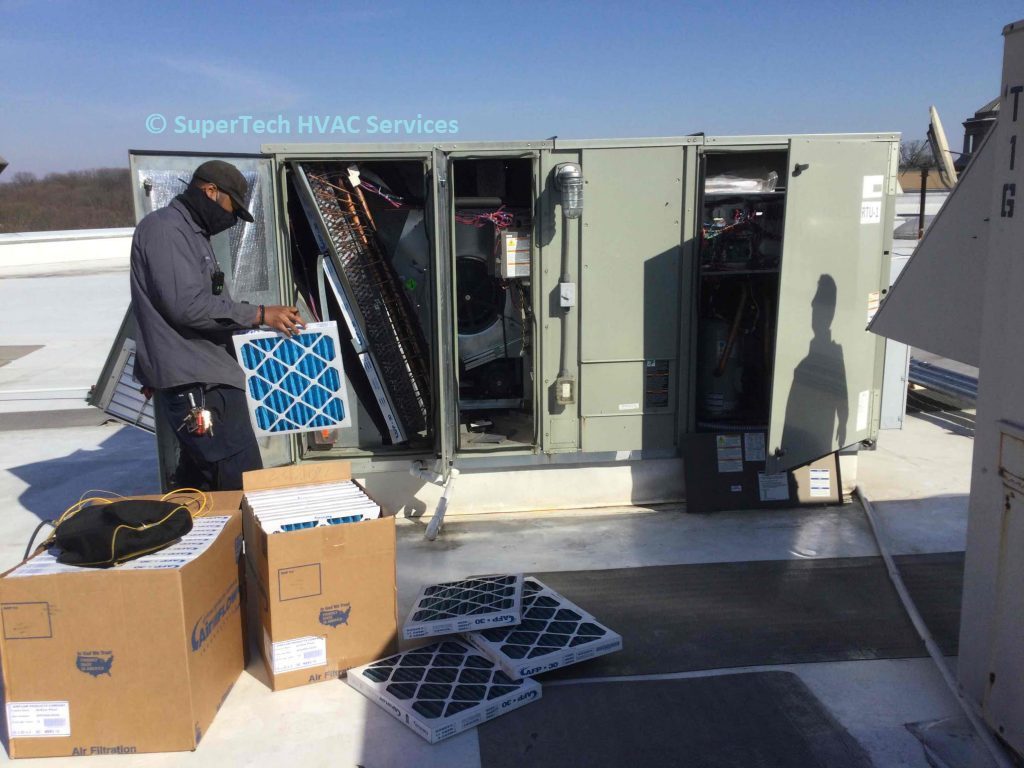Top Mistakes to Avoid During heat pump installation ooltewah tn
How a Warmth Pump and Heating System Collaborate to Enhance Your Home's Heating Performance
Comprehending how a warmth pump and furnace job with each other is vital for homeowners seeking reliable home heating options. Each system has its toughness, supplying a balanced strategy to home convenience. The warm pump masters moderate temperatures, while the furnace supplies quick warmth during extreme cold. This harmony not only lowers energy expenses but additionally boosts the life expectancy of both appliances. What variables affect this cooperation, and just how can property owners optimize their benefits?
Comprehending Warmth Pumps: How They Work
Many people might be strange with their inner workings, warm pumps play a crucial role in contemporary home heating systems. These tools run by transferring warm from one place to an additional, making use of the principles of thermodynamics. In cooler months, a warm pump essences warmth from the outside air, ground, or water, and transfers it inside your home to heat the space. Conversely, during warmer months, it can reverse the process, functioning as an ac unit by expelling heat from inside to the outside.Heat pumps contain an evaporator, compressor, growth, and condenser valve. The refrigerant within the system absorbs warm as it evaporates at reduced temperature levels and stress. The compressor then increases the pressure and temperature of the cooling agent, enabling it to release heat as it condenses. This efficient process can greatly reduce power intake contrasted to standard heating methods, making warmth pumps a lasting option for climate control in homes.
The Role of Heaters in Home Home Heating
Furnaces play a vital role in home heating by providing a dependable resource of heat during the cooler months. They run by generating warmth with combustion or electrical resistance, distributing it throughout the home via air ducts or glowing systems. The effectiveness of a heating system is usually determined by its Annual Gas Use Effectiveness (AFUE) rating, which shows how effectively the device converts gas into heat.Furnaces can make use of different energy resources, including gas, propane, oil, or electricity, allowing home owners to choose one of the most suitable alternative for their needs. Unlike heatpump, which may have a hard time in extreme chilly, furnaces preserve regular performance, making sure that indoor temperatures continue to be comfortable regardless of exterior conditions. Furthermore, modern-day heaters typically come outfitted with advanced innovation, such as variable-speed blowers and clever thermostats, improving their performance and responsiveness. This versatility makes furnaces a vital part in all-encompassing home heating techniques.

Advantages of Using Both Solutions With Each Other
Integrating the staminas of both heaters and heatpump can result in an extra effective and effective home heating service. Utilizing both systems permits home owners to benefit from the heatpump's power performance throughout milder temperatures while depending on the furnace for even more extreme cold problems. This dual strategy can considerably decrease power costs, as heatpump consume much less electrical power than traditional heating approaches when temperatures are moderate.Additionally, making use of both systems together can boost comfort degrees in the home. Warmth pumps can supply regular, even home heating, while furnaces can swiftly raise ambient temperatures when required. Moreover, the integration of both systems can prolong the life-span of equipment by lowering wear and tear on each system, as they share the work. Inevitably, home owners can delight in a well balanced, cost-effective heating option that readjusts perfectly to varying climate condition, guaranteeing a cozy and welcoming home throughout the wintertime months.
How Warm Pumps and Furnaces Enhance Each Other
They produce a complementary home heating system that makes best use of efficiency and comfort when homeowners integrate heat pumps and furnaces. Heatpump operate by moving warmth from the outdoors air or ground, making them very reliable in modest climates. They stand out during milder temperatures, providing cost-effective home heating. Alternatively, heaters create warm with combustion or electric resistance, supplying solid, instant warmth during severe chilly conditions.The combination of these 2 systems permits dynamic adjustments based on temperature level variations. During warmer months or milder winter season days, the heat pump can take the lead, conserving energy and decreasing costs. As temperature levels decline, the heating system can perfectly engage, making certain constant warmth throughout the home. This harmony not just maximizes power use but additionally boosts the life expectancy of both systems, as each unit runs within its excellent efficiency variety. With each other, they create a well balanced atmosphere that adapts to differing climate needs.
Optimizing Performance: Tips for Homeowners
House owners can enhance their home heating efficiency via a number of sensible methods. Establishing a routine maintenance routine, incorporating smart thermostat modern technology, and implementing reliable insulation and securing options are essential actions. These steps not just improve convenience but likewise reduce energy prices.
Regular Upkeep Set Up
To ensure optimal home heating effectiveness, developing a regular upkeep timetable is vital for any kind of home. Property owners need to prioritize routine examinations of both heatpump and heating systems to identify peak performance. This includes altering air filters each to 3 months, as blocked hop over to these guys filters can substantially decrease performance. Additionally, organizing professional maintenance at the very least as soon as a year permits specialists to recognize and resolve potential issues before they intensify. House owners must additionally cleanse the warmth pump's outdoor unit to avoid debris accumulation that can impede air flow. By adhering to a routine maintenance routine, house owners not just improve their furnace' effectiveness however likewise prolong their life-span, leading to greater comfort and reduced energy prices throughout the cooler months.
Smart Thermostat Assimilation
Incorporating a wise thermostat into a home heating system can greatly boost energy efficiency, specifically as it permits for exact control over temperature setups. These gadgets can learn the homeowner's timetable and preferences, instantly changing the temperature level to enhance comfort while decreasing energy usage. They can reduce heating throughout times when the home is unoccupied, lowering unneeded consumption. Lots of smart thermostats additionally supply real-time power usage information, enabling home owners to make informed choices about their heating behaviors. Furthermore, remote accessibility via mobile phone applications allows individuals to readjust settings from anywhere, making certain the home is warm upon return. Generally, clever thermostat integration not only boosts comfort however substantially contributes to energy cost savings and efficiency.
Insulation and Sealing Solutions
Smart thermostats play a critical role in energy effectiveness, yet their effectiveness can be significantly improved by correct insulation and securing solutions. Property owners must focus on insulating wall surfaces, floorings, and attic rooms to reduce warm loss. Premium insulation products, such as spray foam or fiberglass, can substantially improve thermal Read More Here resistance. Furthermore, sealing gaps around ducts, doors, and windows prevents cold air seepage and warmth retreat. Weatherstripping and caulking work approaches for resolving these leakages - heat pump service. Regular inspections for air leakages, in addition to the usage of blower door tests, can help identify trouble locations. By buying insulation and securing, homeowners can enhance the performance of their heater, inevitably bring about minimized energy consumption and lower utility bills
Usual Misconceptions Regarding Heat Pumps and Furnaces
What misconceptions border warm pumps and furnaces? Many people wrongly believe that heatpump are inefficient in colder environments. In truth, modern warmth pumps are created to operate successfully even in reduced temperature levels, offering dependable home heating throughout wintertime. Another usual myth is that heaters are constantly more effective than heatpump. This depends on the certain energy sources and performance scores of the devices in question. Some might likewise assume that using both systems all at once is unnecessary, however actually, this combination can maximize heating efficiency, specifically during severe weather. pop over here Furthermore, individuals frequently think that heatpump need consistent maintenance, when in reality, they have comparable upkeep needs to conventional heating unit. By debunking these myths, house owners can make even more informed decisions regarding their home heating alternatives, ultimately resulting in enhanced convenience and power efficiency in their homes.
Maintenance Considerations for Combined Solutions

Often Asked Concerns
Can Warmth Pumps Job Efficiently in Very Cold Climates?
Warmth pumps can struggle in incredibly chilly environments as a result of reduced efficiency and warm removal restrictions. Nonetheless, advancements in technology have led to models designed for better performance in such problems, enhancing their viability in severe atmospheres.
Exactly How Long Do Heat Pumps and Furnaces Usually Last?
Heatpump usually last 15 to twenty years, while heating systems have a lifespan of 15 to 30 years. Regular upkeep can expand their durability, guaranteeing efficient operation and lowering the demand for early replacements.

What Is the Average Price of Setting Up Both Equipments?
The average price of installing both a warm pump and a furnace normally ranges between $5,000 to $10,000 - ductless mini splits. Aspects affecting this cost include system dimension, installation complexity, and regional labor prices
Exist Tax Rewards for Using Energy-Efficient Heating Equipments?
Many house owners ask about tax rewards for energy-efficient home heating systems. Numerous government and state programs often offer refunds or credit reports, motivating the adoption of sustainable technologies to reduce energy intake and advertise ecological duty.
Just how Do I Choose the Right Size Heat Pump and Furnace?
Choosing the best size heatpump and heating system includes determining the home's square video footage, thinking about insulation high quality, and examining regional climate. Consulting an expert can guarantee optimal system performance and energy efficiency based on details demands. ductless mini splits. Understanding how a warmth pump and heater job with each other is necessary for homeowners seeking reliable home heating services. In colder months, a warmth pump removes warm from the outside air, ground, or water, and transfers it inside to warm up the living area. When property owners integrate warmth pumps and heating systems, they create a corresponding heating system that takes full advantage of efficiency and convenience. Warm pumps operate by moving warm from the outside air or ground, making them very efficient in modest climates. Heat pumps can have a hard time in incredibly cool environments due to reduced performance and heat removal restrictions